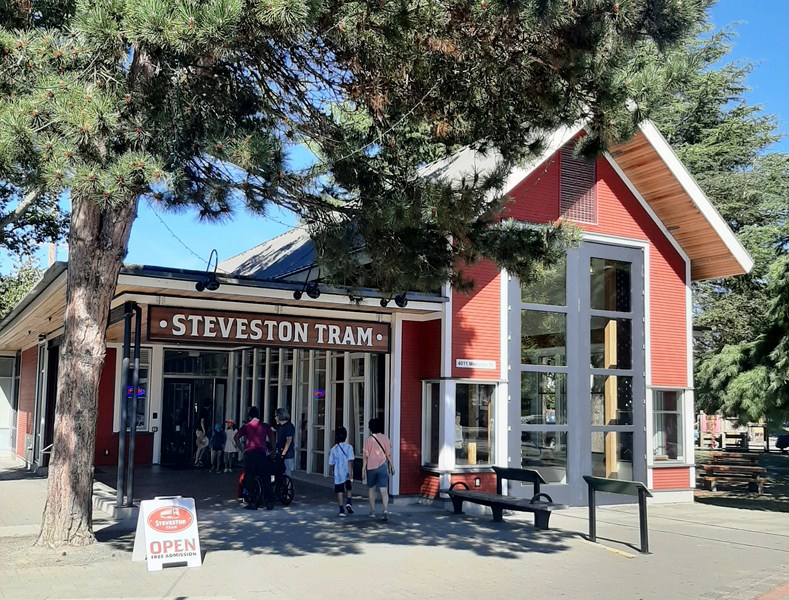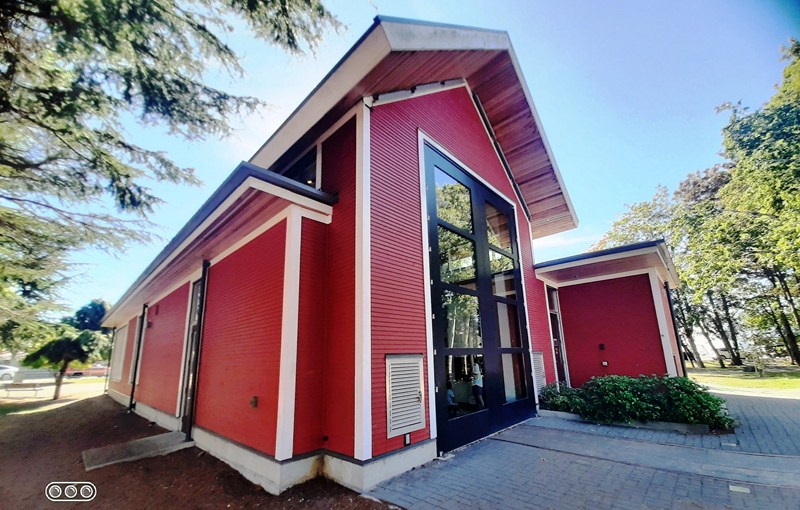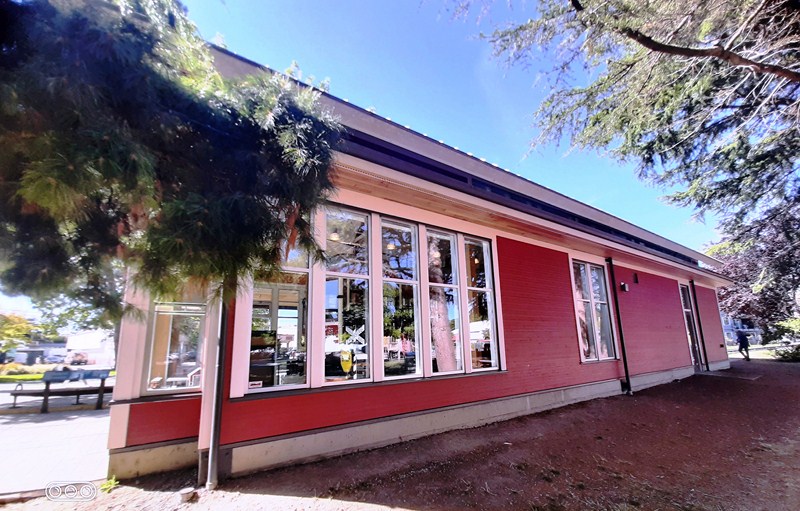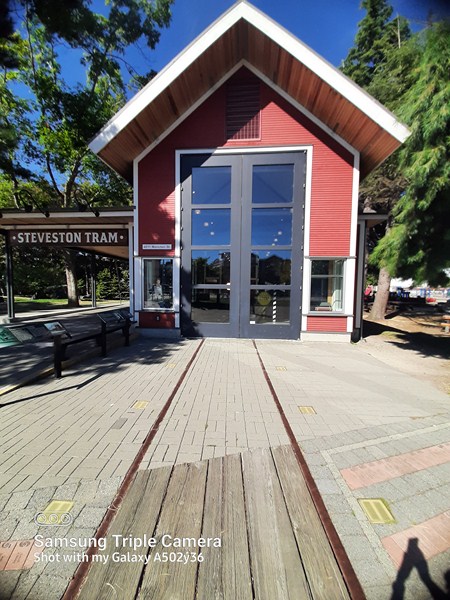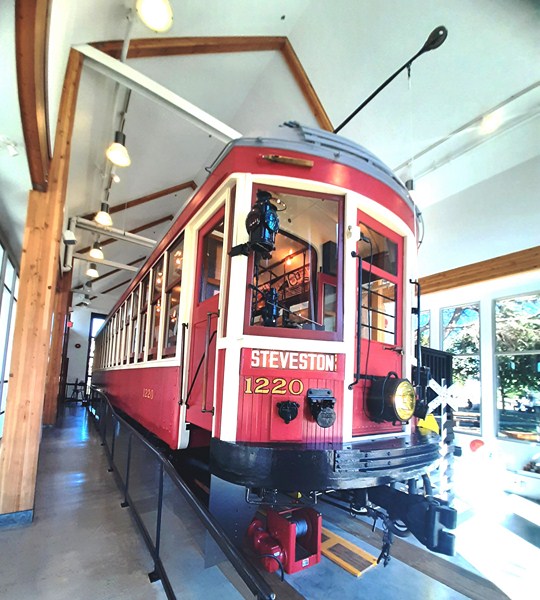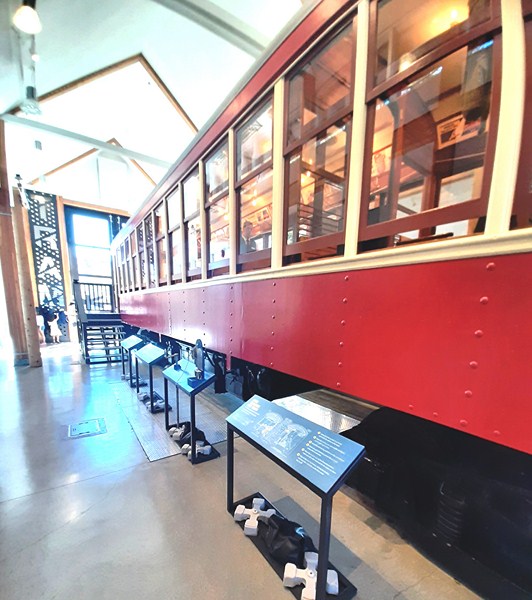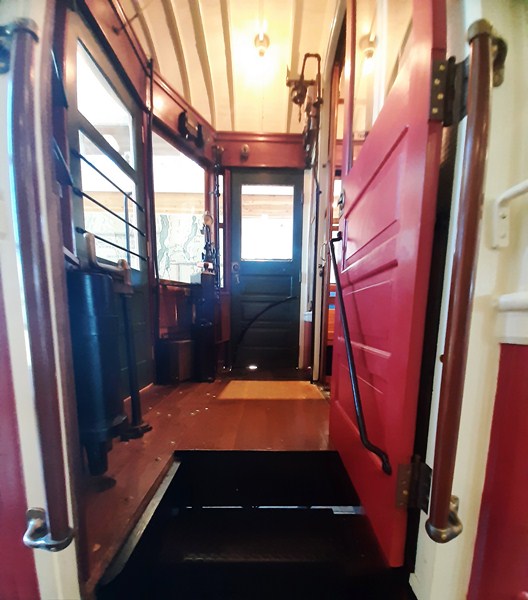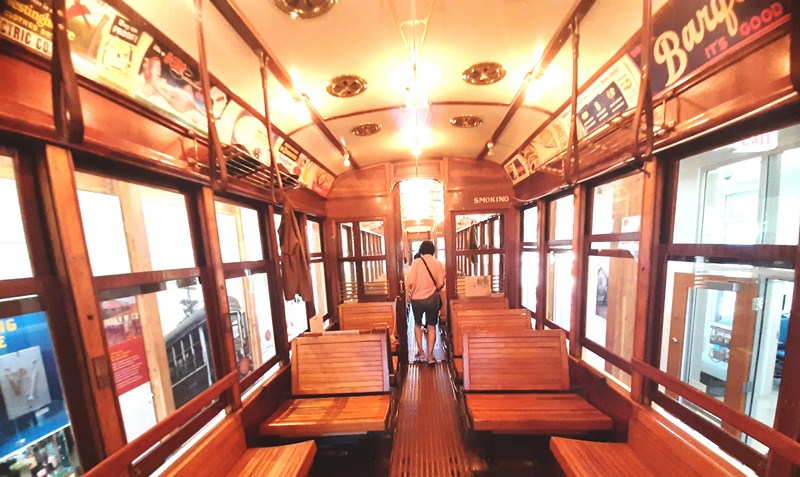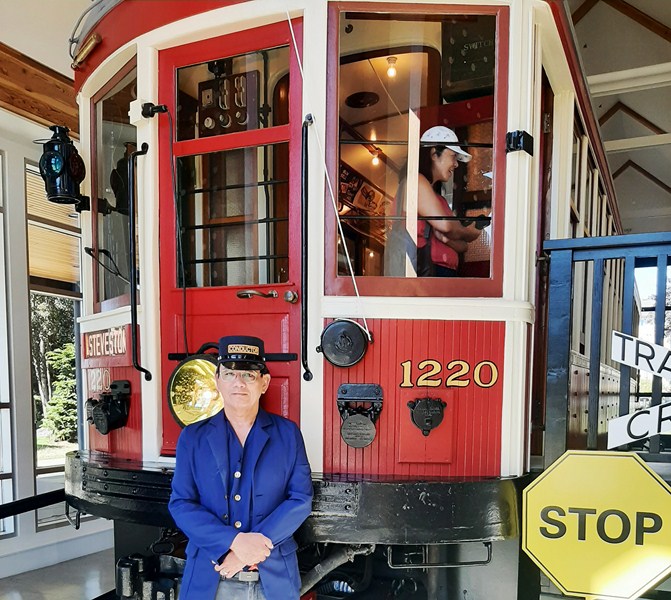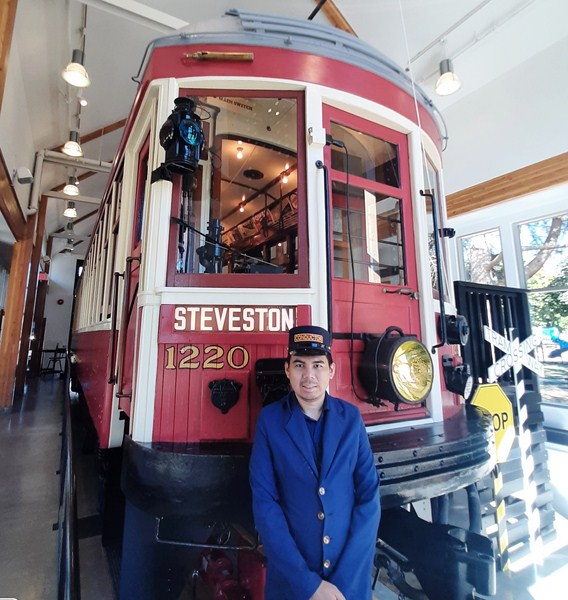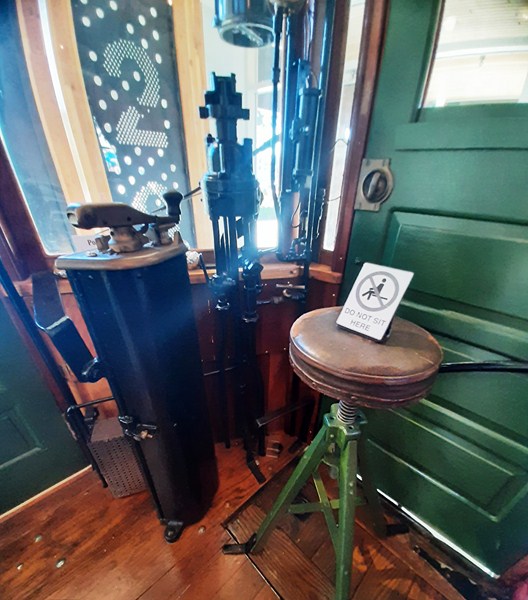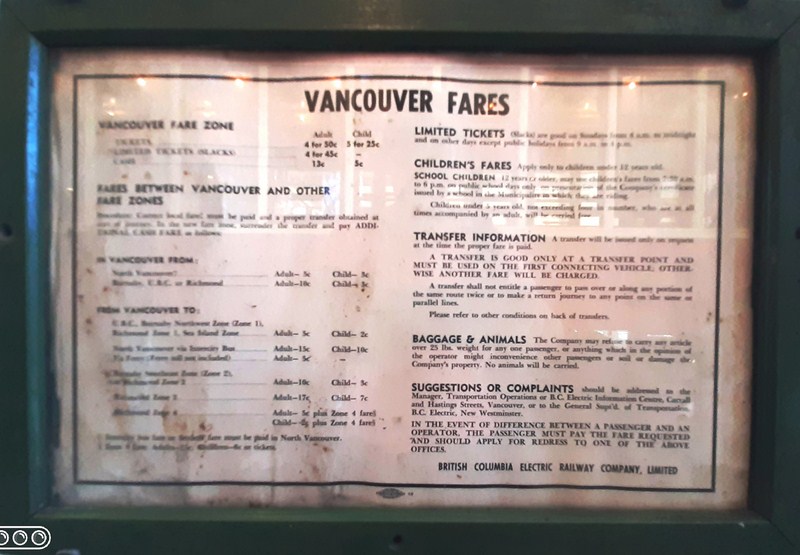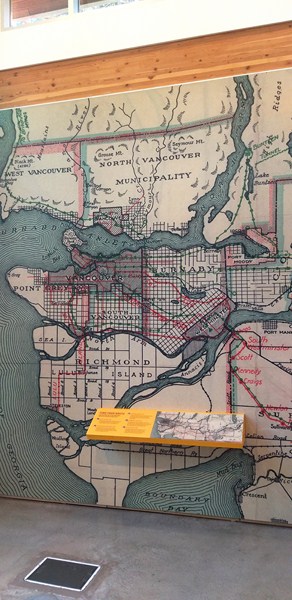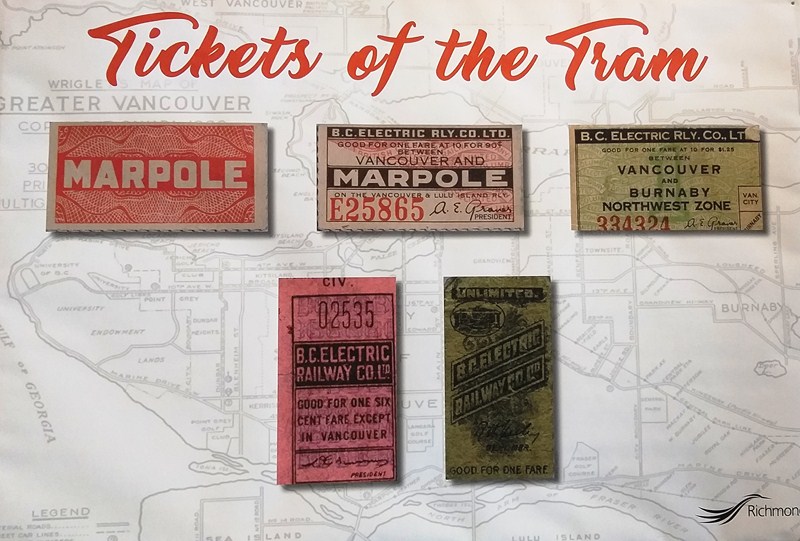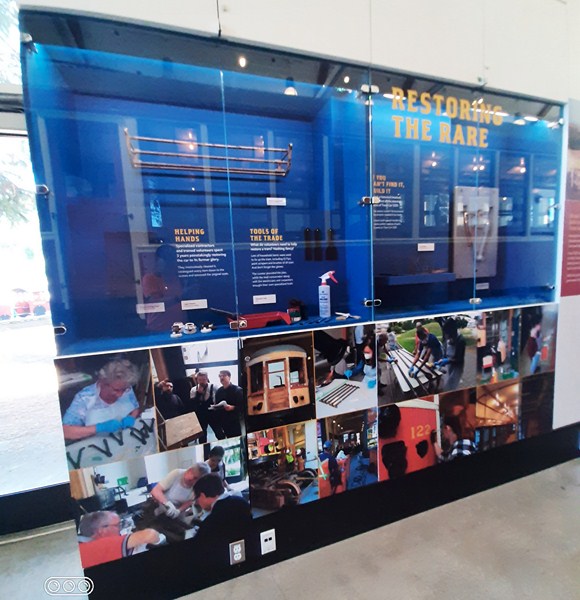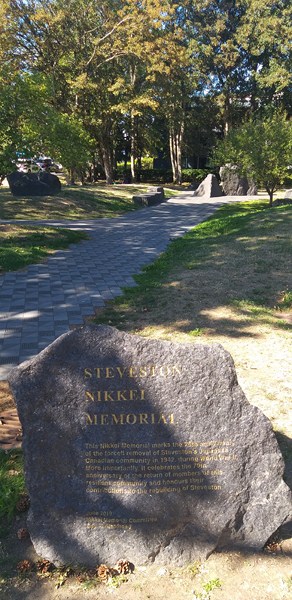The Steveston Tram Museum, housing the beautifully restored Tram Car 1220, one of the original trams that ran on Richmond’s interurban rail system and the largest artifact in the Richmond Museum Collection, allows visitors to experience authentic Interurban rail travel and learn about early 20th century transportation.
The bright red, 2,370 sq. ft. museum, opened in May 2013 across the street from where the Steveston Station (which burned down in 1928 and replaced by a simple tram stop shelter in 1929) once stood, was designed by Birmingham & Wood Architects and built by Scott Special Projects Ltd., around the original tracks of the BC Electric Railway (BCER) Interurban Network.
For 55 years, it provided an important economic and social connection between Richmond and the rest of the Lower Mainland. Today, you can still spot the original railroad path and power poles around the tram.
The building has 27-ft. high windows, a winch system to allow the tram to be pulled out of the building for special events, and public art created by artist Mia Weinberg, a 1994 graduate of Emily Carr University of Art and Design, which will be integrated into the floor of the outdoor platform at the main entrance of the building. It also has a community meeting room and had a restoration space (now converted into a programming space after the restoration was completed).
Here’s the historical timeline of the BC Electric Railway Interurban Network:
- In 1902, rail connection in Steveston started when the Lulu Island railway, owned by the Canadian Pacific Railway (CPR), ran freight and passenger steam trains to the area.
- In 1905, the CPR leased the rail line to the BC Electric Railway Company (BCER), who electrified it for tram use. This was part of the BCER’s establishment of an Interurban railway network that would connect different communities throughout the Lower Mainland, otherwise difficult to reach.
- In 1913, BCER added 28 1200-class tram cars bought from the St. Louis Car Company in Missouri (USA). Among them was Tram Car 1220.
- By the 1940s, it had grown to 72 cars and 140,000 annual passengers
Tram Car 1220, nicknamed the “Sockeye Special,” was discovered in a Mitchell Island warehouse in 1992. Serving the local residents of Steveston to Marpole (located in south Vancouver), it was made of sturdy steel and wood, it was painted bright red.
The tram car could carry up to 64 seated passengers at a time. They ran from the BC Electric Building at the southwest corner of Carol and Hastings Street to Steveston Village.
On February 28, 1958, Tram Car 1220 made its final voyage between Marpole and Steveston, marking the end of an era for the Richmond community and for transportation history in BC.
After decades of being off the tracks, the City of Richmond acquired Tram Car 1220 and, on May 3, 2013, opened the Steveston Tram Museum which was inspired by the architecture of the first Steveston Tram Station.
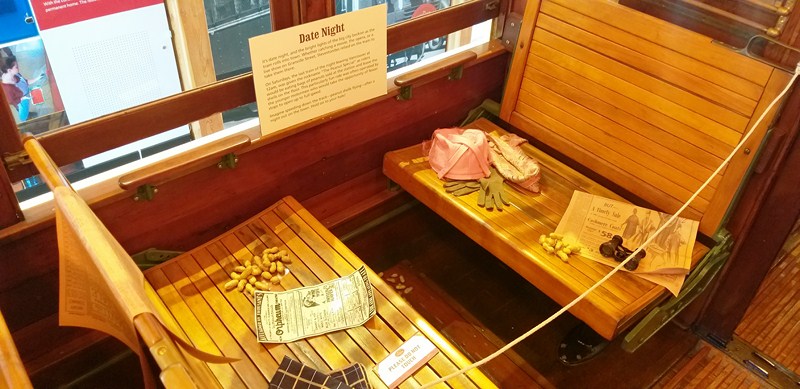
A mini display. On Saturday, the last train of the night (12 AM) leaving Vancouver carried Steveston revelers who strewed peanut shells from the snacks they’d bought from the station. Not surprisingly, this last-nigh service was locally known as the “Peanut Special.”
Five years later, after a painstaking, three-year, $400,000 restoration starting in 2016, the tram made an exciting return to its former glory.
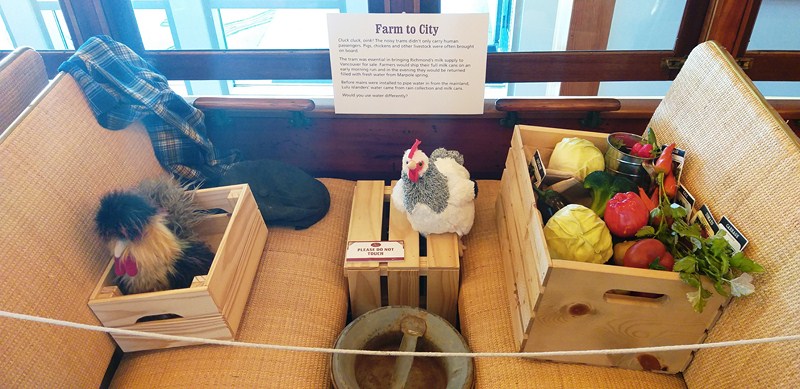
Another mini display showing chickens, a milk churn and crates of vegetables that sometimes rode alongside passengers
Tram Car 1220 is one of only seven remaining BC Electric Railway cars, five of them in BC in various states of functionality (most of the interurbans ended up being burnt at the railyard under the Burrard Street Bridge). Several “sister” trams are located in Metro Vancouver, as well as one in Ottawa (Car 1235 at the Canada Science and Technology).
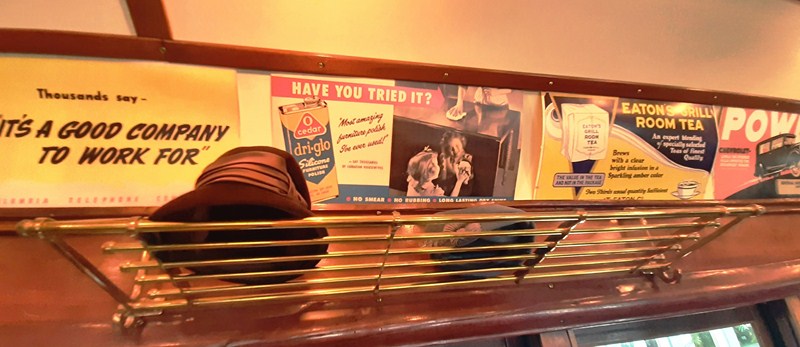
Vintage advertisements, lining the tram;s interior, of products such as Eaton’s Tea, Dri-Glo, Barq’s and even Goodwin’s “corn dodger” shoes
In Metro Vancouver, you can visit the other surviving BCER cars at the Burnaby Village Museum (Tram 1223) or the Fraser Valley Heritage Railway Society in Surrey where they offer hour-long rides around Cloverdale aboard Car 1225.
Check out “Burnaby Village Museum”
When we entered the tram, a male costumed Heritage Interpreter dressed as a tram conductor immediately greeted us and walked us through, pointing out things that we would never have noticed – the smoking half of the tram with no ashtrays, the screws on the outside that are all aligned, etc.
The restoration inside was exceptional – from the rattan seats, graffiti to the match striker plates (where you can strike up a light) at the smoking section.
Exhibits and child-friendly interactive displays also showcase this piece of Richmond history. One exhibit highlights the impact that trams had on Richmond and the Lower Mainland. It includes an extensive timeline on the history of trams which is complimented with footage of trams travelling through Richmond.
There is also a huge interactive map of all the tram routes that ran through Metro Vancouver. Push buttons light up the five main lines and the stations that operate on them.
Another interactive aspect of the exhibit is a display explaining how conductors would operate the trams with the ability to use the bell and handbrake that were onboard trams.
Another display on the tram car’s restoration process highlights the efforts of volunteers and paid professionals to bring the car to its past glory. Visitors can also dress up as a conductor.
Evocative artifacts on display include rail spikes, tram tokens, a 1950 employee badge, a 1914 tram whistle and a handsome clock of the type that would have hung on the wall of every station along the network.
Also on display are faded signs from several old stations (Steveston, Trucks and Woodward’s); a 1950s hat worn by a motorman (AKA tram driver); a fare poster from the line’s final years (an adult one-zone fare was just 13c), a brake lever, bell cord and conductor’s coin changer.
Adjacent to the museum is the Steveson Nikkei Memorial, a public art and contemplative garden space unveiled on June 22, 2019, that honors the 75th anniversary of the evacuation, relocation, and internment of 2,500 Japanese Canadians from Steveston during World War II. It further celebrates the rebuilding of the Steveston community following their return from internment in following the war.
Steveston Tram Museum: 4011 Moncton St., Richmond, British Columbia V7E 3A8. Tel: 604-238-8081. E-mail: interurban1220@richmond.ca. Open Tuesdays to Sundays, 12 to 4 PM (Spring, January 3 to May 19); daily, 10 AM to 5 PM (Summer, May 20 to September 4) and Tuesdays to Sundays, 12 to 4 PM (Fall/Winter, September 5 to December 31). Closed on statutory holidays. Admission is free.

